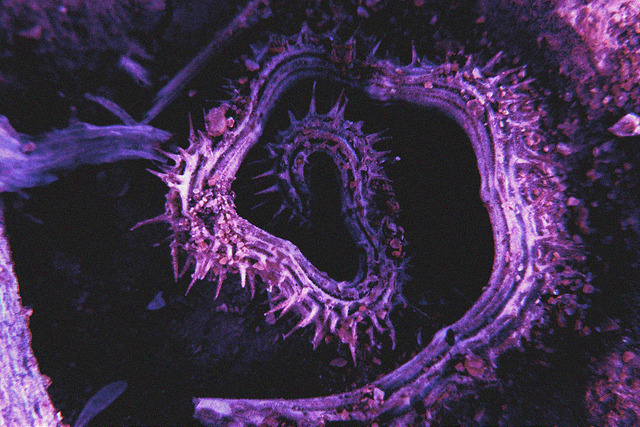The evolution of viruses and immunity
13 Dec 2016
The biologist Dr. Doping speaks about virus survival strategies, depending on the evolution of the ways of the DNA and an endless arms race organisms.

There is a famous question: which came first - the chicken or the egg? You can just ask which came first - a virus or immunity? And, as in the question of the chicken and the egg, neither of the answer may not be true. The correct answer is that they occur simultaneously in constant interaction, from simpler shapes. As soon as the virus or virus-like parasites - and they were, apparently, at the same time with the birth of life - immediately appeared and protection from them.
History of the study of viruses
Protection, more precisely, vaccines against viruses have appeared before the people realized that this virus. They understood that there are infectious diseases, but did not see any difference between the bacteria, viruses and even what some amoebas. Apparently, there was the first vaccine against smallpox, which the English physician Edward Jenner created at the end of the XVIII century. Anyway, this is the first documented case studies and the use of the vaccine. Later, in the 1870s, another famous event happened - the creation of Louis Pasteur's rabies vaccine. It worked fine and looked like a miracle: quite an incurable disease that can be prevented and even cured if in time to begin treatment with these vaccines.
But this vaccine created blindly. Any ideas about that there is a special type of agent that causes the disease, has not been. These ideas began to emerge in the late XIX century. In 1890 was a Russian scientist, Dmitri Ivanovsky, then a young man who is ready to defend his thesis, is not particularly remarkable. He investigated the tobacco disease and was the first who paid attention to the fact that the disease is transmitted from the juice of diseased plants. That is the causative agent of the disease once passed through filters that do not pass the bacteria. Ivanovsky not really understand this living organism or not, he probably thought it was a toxin, although suspected, that it started somehow reproduces itself. But be that as it may, the first to describe an object, drew the attention of the scientific community and has become, in fact, the founder of virology. And then a fairly short period of time has been made a number of important discoveries: it has been shown that many diseases are caused by viruses - foot and mouth disease, yellow fever, polio, avian sarcoma.
English bacteriologist Frederick Tuerto in 1915, described in an article group of viruses that infect bacteria, and French-Canadian microbiologist Felix D'Erell in 1917 described the virus in detail and gave them the name of bacteriophages, ie "eaters of bacteria ', because when added to bacteria in a nutrient medium, these viruses to create a dead zone bacteria. Thus, by the end of the First World War it became clear that there are some tiny agents that constitute a very special class of parasites.
Viruses vs. immune system
Speaking about the opposition of viruses and bacteria, you can remember such a thing, it is officially recognized in biological science and plays a huge role - it is the arms race. It sounds anthropomorphic, but it officially adopted the term. The whole history of life - it's an arms race between hosts and parasites. The fact that any immunity is based on the recognition of his and others'. The process of combating viruses and immunity can be illustrated by the well-known phrase from the Red Queen's "Alice in Wonderland", which said that in order to stay in place, you need to escape as quickly as possible. For example, making the now famous CRISPR system? She borrows the genome of the parasite - not the whole, of course, a piece long enough to be sure (well, almost-almost exactly) was not in the genome of most bacteria or archaea, and it gives a great result. Viral DNA integrated into the host genome, is used for the synthesis of RNA molecules specific complementary to the viral genome, which serves, in fact, vaccine. Special enzymes cut the viral genome in the place of attachment of the RNA and thus kill the virus. To support your own immune system – buy IRS 19, Cyanocobalamin injection, Selank, Metaprot, Ladasten.
Such immunity is extremely effective. But it turns on the proverbial race as soon as the virus changes in the relevant part of the genome, it becomes resistant to the vaccine. And in order to restore the immune system, the host must borrow new fragments of the modified viral genome. Since it is such a fundamental (as it is based on a central principle in biology - the complementarity of nucleic acid) form of the arms race.
There are other ways to fight. Many viruses are developing special, so to speak, protective funds. In particular, viruses are very often there are some proteins that are adapted to the immune system and prevent it. Very often it happens that the virus grabs host defense system component and also uses against her. This component is changed and no longer work, but is perceived as working. And so the virus as it puts the master stick in the wheel. This is a very common phenomenon. This arms race leads to a variety of viruses and host defense system. This is the most important factor generating diversity in the process of evolution.
It is obvious that some viruses adapt to the immune system and continue to struggle, and some are losers. But we know nothing about these species that existed millions of years ago, but did not pass the way of evolution. However, we can reconstruct some ancestral forms, which left offspring that have survived to the present day.
Survival Strategies of Virus
It is important to understand that when we talk about viruses, we talk about things that are inevitable for any evolving system of the coevolution of hosts and parasites. And then we must understand that the ultimate goal of all viruses and parasites is by no means the death of the host. That device, which is optimized in the course of evolution has nothing to do with the murder of the owner. The virus only seeks to multiply quickly and efficiently, and this ability is improved in the course of its evolution. In fact, for it is better never to kill the hosts for the virus it would have been best to its owners were happy that he could multiply particularly effective. But here's the problem for the virus that these objectives - effective propagation and preservation of the life of the owner - often come to a contradiction. And in fact, many viruses are "moderate" way of life and will never kill the owners. To do this they have to decrease the intensity of reproduction.
Another strategy is to multiply the maximum, and when the owner dies, move to another. The advantage of this or that strategy depends on environmental sustainability. If the parasite can "predict" that the population of the host will be stable and will exist for millions of years, then kill him in any case not necessary. If, however, a high probability of some disasters, which in any event will drive the host population to zero, then it should be used as quickly as possible and move to other populations. I must say that some viruses have evolved in such a way as to combine both of these strategies.
In the course of evolution in viruses, there were other ways to survive. They can build their genome into a host cell and thus to live. However, when something bad is threatening its existence, the virus is activated, goes out of his sleepy state, killing the host and moves to another. Generally speaking, in the course of evolution have won just those parasites, which are able to combine the two mentioned strategies. This is the ability to properly allocate their bets in the casino. And it is very important to understand that the death of the owner or his grave condition in any case is not something beneficial to the parasite. This is a side effect of its activities.
Viruses and the Evolution
Reproduction of viruses usually do not bode well for individual organisms. While on the other hand, the viruses may induce immunity. There were even attempts to cure cancer by using viruses. But in general, in the course of the evolution of parasites and viruses play a huge role, without them there is no and there will be no life. And the whole history of life - a history of co-evolution of parasites interact with the host. And home to increase complexity, improving the immune system would not be possible without the constant interaction with the parasite. In particular, it is possible mathematically to show that the emergence of multicellular organisms is stimulated in many ways it is protected from viruses. Multicellular becomes advantageous when cells are attacked by the virus: advantageous when one cell assumes the stroke and using mechanisms of programmed cell death can kill themselves and others to rid of the virus. And many other tools that exist in cellular organisms, or associated with protection from viruses, or genetic material, which is the owner receives from the virus.
One can cite the following example. There are quite a well-known enzyme called telomerase - this is an enzyme that stabilizes our chromosomes, as it ensures that they do not become shorter. This is essential for the survival of the organism, and enzyme activity is due both to aging and cancer. And initially, at the dawn of eukaryotes, this is the telomerase was nothing like the reverse transcriptase, which is in early eukaryotes was part of one of the mobile genetic elements. And we must always remember that our own genome where a two-thirds or a little less composed of remnants of mobile genetic elements. Most people believe that this is a useless junk, but so many of them that many of them are used for all sorts of needs. Thus, the evolution of the hosts never free from parasites and a lot of them take.
Evolution and classification of viruses
In 1971, the great American scientist David Baltimore proposed to classify viruses, depending on the type of genomic nucleic acid - DNA or RNA. The type of virus, according to this classification, it determines the reproduction cycle. But the nature of these classes are distributed very unevenly. If we look at what types of viruses infect different organisms get an interesting picture. In bacteria and archaea, the vast majority - are viruses containing double-stranded DNA. A eukaryotic predominate RNA viruses, of which there is fantastic variety. The reasons for these differences are very interesting, but well understood only in a few cases. For example, large DNA-containing viruses can not be propagated in plants, there are not only survive and are present in algae. In higher plants, their place is taken by the RNA-containing viruses. That concept is just recess defines, apparently, the differences in the propagation of viruses. But it is not always possible to accurately grasp.
Evolution of immunity
Talking about the evolution of immunity can be very long, but it is important to understand some very important things. Everyone knows that the replication of the genetic material is based on the complementarity of nucleic acids. And, accordingly, important immune system is also based on this principle. In particular, it is possible to take a piece of RNA and it is suitable for recognition. It is a powerful weapon against someone else, the parasite, such as viral genomes. But where to take this unique protective nucleic acid? From the genome of the parasite. This can be done in different ways. For example, in eukaryotes, generally, cutting occurs RNA virus genome into small pieces and then some of these bits is used to identify a unique location in the genome of the parasite and destroy it using nuclease enzyme, which is included in the complex. This is a simple and elegant principle.
However, when the infection goes away, the process is terminated, and vaccination is not happening. And the next step is to provide a vaccine. That is what makes the CRISPR system. She pays for it is quite a big complex and the possibility of autoimmune reactions. Nevertheless, it is well suited to ensuring that store information about the parasite. It includes elements of the genome of another in their own DNA - this is the basic principle of CRISPR system functioning. And this powerful principle is to utilize complementary nucleic acids, the same principle of replication in order to separate from its foreign and destroy it. This method, which is used by all organisms. The second method is that its recognition is carried out by means of another and specific proteins - this is what makes our immune system using receptors on cells which recognize the virus and soluble antibody. In general, all the way immune in a global sense - is the recognition of his and others', and the protection of his destruction of another. And in the process of evolution is carried huge number of different ways.
In the future, the complete destruction of viruses is neither necessary nor possible. But the destruction of human diseases that are caused by them, such as smallpox and polio - this is the current reality and clear purpose. These are viruses that are dead end of evolution and at the same time kill the host - they really can and should be eliminated. Against the major viral diseases have a good vaccine, except for rapidly changing viruses such as influenza or HIV. In other cases, the vaccines are working quite well. Many studies conducted in the field of fast-changing and unpredictable virus. Scientists are trying to understand how to predict the evolution of these viruses in the microscale and get effective vaccines. The end of this work to wait yet. The big problem is not so much in the newly emerging viruses, how many come from different distant places, such as Zika virus.

 Cart
Cart





